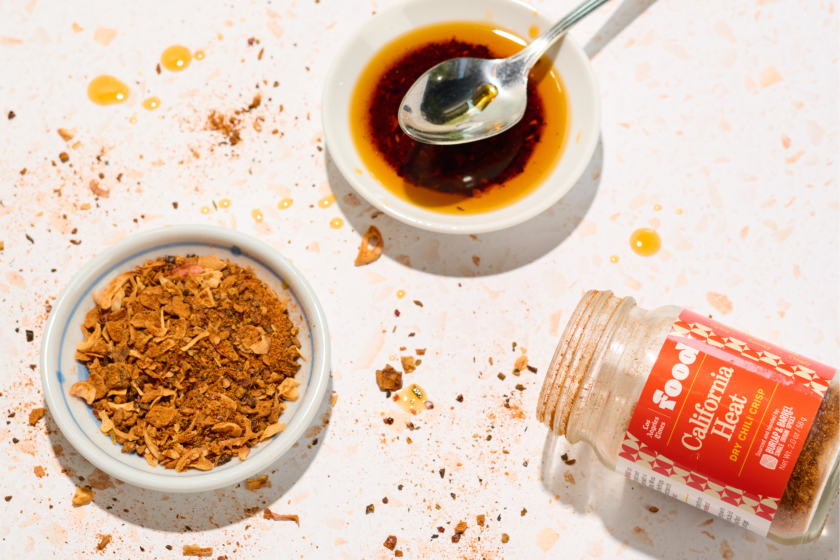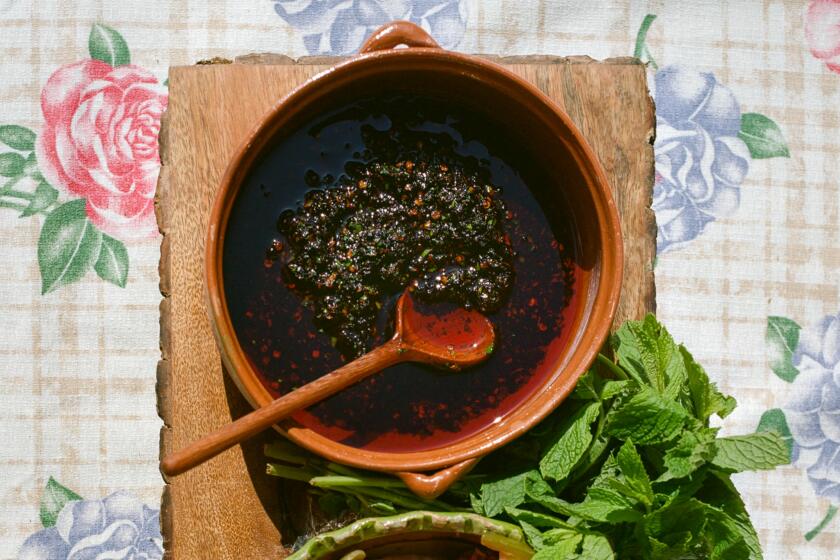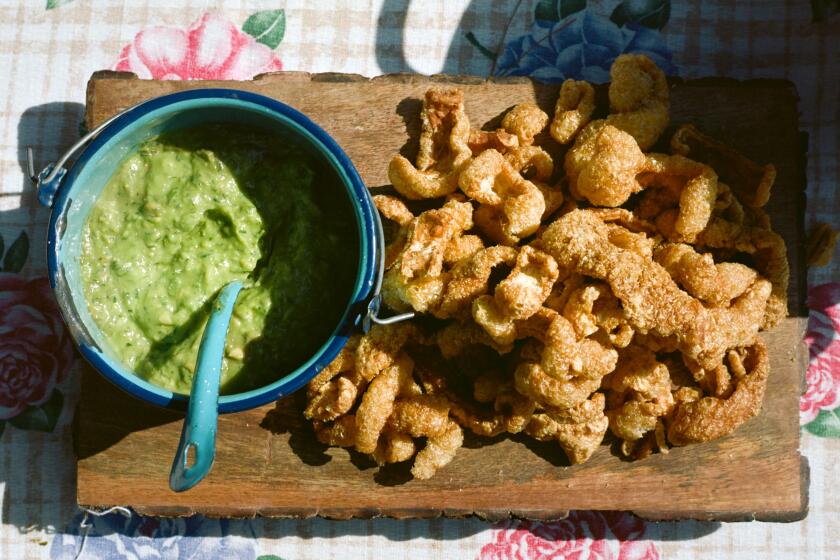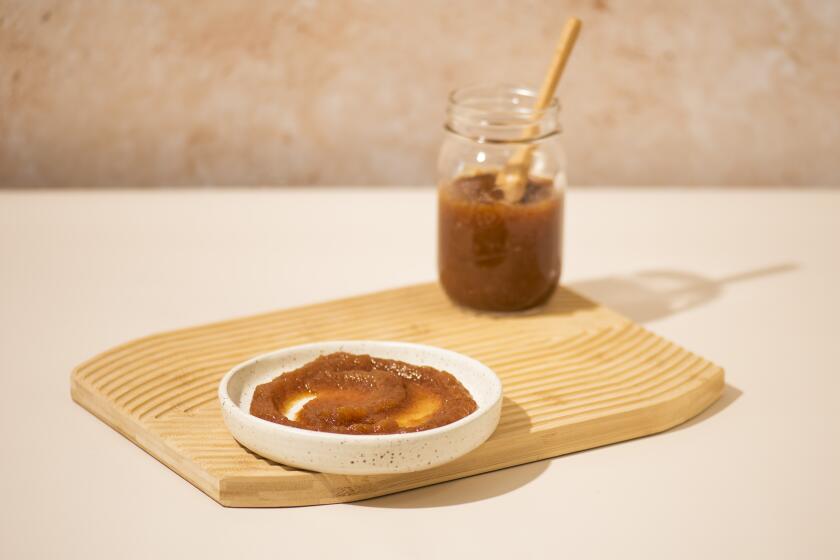Basic caramel sauce

Oscar Wilde once wrote, “the only immortality I desire is to invent a new sauce.” It was a characteristically pithy statement that could very easily have been uttered by Antonin Careme as well.
But as Careme -- who didn’t invent sauces as much as codify them -- would be the first to point out, immortality can just as easily be found in an old sauce, especially if it’s a very good one, as in the sauce you created out of smoke and mirrors (and wine and butter) last night. Take caramel sauce, a classic that is very old indeed, and which is as close to alchemy -- and thus, by extension, immortality -- as you can get in a saucepan. And the biggest surprise is how easy it is: With a few basic caveats in mind, it takes about 15 minutes to accomplish and is virtually foolproof.
A classic caramel sauce is a splendid thing, rich and bronzed, with a depth of burnished sweetness and a flavor profile that has more in common with a single-malt Scotch than candy. Easy to master and almost irresistible, it’s a sauce that can take you all the way through the holidays: The heady flavor is a perfect foil for winter fruit dishes and seasonal pies. Pair it with bread pudding or a simple poached pear; drizzle it around ice cream or a warm apple tart. It’s as versatile as it is easy to accomplish.
The sauce itself is quite simple. Just boil down sugar, water and a little lemon juice until the mixture turns a deep bronze color, then pour in heavy cream and whatever flavoring you might want to add. Stir and refrigerate. Fiat sauce.
Torque up the sauce with some fleur de sel, or flavor it with spices, fruit or liqueurs for a different spin. And tempered with Banyuls vinegar or demi-glace, it can be used to sauce savory dishes, such as pan-roasted duck or a holiday goose.
The alchemy is profound. In only a few minutes, a cup of ordinary granulated sugar melts into the precious gold of a deep caramel. Watching this happen in a pan is like being privy to a magic trick: It’s so simple, so quick and beautiful, that you think there must be some sleight of hand, some trap door in the bottom of the saute pan, for it to possibly work. And the transformation of taste is as remarkable as that of the sugar itself: From a single dimension of sweetness to a world of smoke and honeyed flavor, deep hints of wood and fruit that can be simply played up with a squeeze of lemon, a sprinkle of sea salt, a dose of cream.
The best way to make it
Caramel is a little different than it was back in Careme’s day -- the legendary chef did not, by the way, invent either caramel or creme caramel, despite the happy assonance of his name -- as over the years we’ve changed the procedure slightly to prevent the sugar from burning, and added cream and sometimes butter to mellow out the sauce itself. But the simple equation is the same: Take sugar and melt it until it changes structure, shape, color and flavor.
In the old days, chefs simply melted plain sugar in a pot, then added water, or other liquid, and boiled it until it reached the consistency they wanted. But this, called the “dry method,” is trickier than it sounds -- the sugar can melt unevenly and burn, or caramelize too quickly. Or it can crystallize, a process in which the sugars form crystals that in turn seed other crystals -- and soon generate an ice storm in a saucepan instead of anything like a caramel sauce.
The “wet method,” in which water -- and an invert sugar, such as corn syrup, or an acid, such as lemon juice or cream of tartar -- is boiled along with the sugar, easily solves all these problems. Adding a squeeze of lemon also lends a slight hint of citrus to the sauce, a welcome note which keeps the caramel from becoming too sweet and cloying.
With the addition of water and lemon, the sugar dissolves, boils down and ultimately melts and caramelizes, but it does so evenly and slowly enough -- it takes about eight minutes -- so that you can control the depth of caramelization. Some people appreciate a lighter, smoother and sweeter flavor, while others like a darker, smokier profile. Like a good Scotch whiskey or a well-roasted coffee, caramel can hit varying notes.
While the sugar is boiling down, you can stir it occasionally or swirl the pan to ensure even caramelization. Unlike caramel made by dry method -- which has generated much debate about whether to stir or not, and with what utensil -- with the wet method it doesn’t much matter how you do this or even how much. Nor do you have to brush down the pan or cover it to prevent crystallization.
Add flavors to the mix
One of the nice things about making caramel is that it’s done by sight, not by candy thermometer -- you get to cook by feel and judgment instead of calculation. After the water boils off and the sugars melt and caramelize, it’s a question of color. Watch carefully: At this point, the sugars caramelize very quickly and can easily burn if left too long on the flame.
As soon as the caramel reaches the color you want, take it off the heat and whisk in the cream all at once. Stand back: The mixture will froth and bubble like a mad science experiment. In making caramel, the choice of saucepan is important. You want one with high sides and a heavy bottom and not one with a non-stick surface: Stainless steel is best because it’s light enough in color to let you judge the color of the melting sugar. (And it’s not difficult to clean, as caramel made this way won’t adhere to the pan: Just rinse it in hot water.)
Adding sea salt or fleur de sel to caramel brings out more layers of flavor and, like the lemon, adds a counterpoint to the sweetness. You can also add any number of different flavorings -- vanilla or other extracts, liqueurs, fruit juices or vinegars. For butterscotch flavor, stir in a few tablespoons of butter. Or consider infusing the cream first with peppercorns or rosemary or anything else that sounds good.
Then pour the caramel sauce into a glass container and chill it for at least half an hour. This allows the flavors to marry while the caramel sets up, cools and thickens. Once cooled, you can use it right away or keep it covered tightly in the refrigerator for weeks; to loosen it up enough to use, just give it a minute in the microwave. It’s a very resilient sauce: After reheating, it’s as good as new, ready to be poured over cinnamon ice cream or around a freshly baked apple pie.
Or pair it with a pain perdu made with rosemary bread and topped with sauteed apples and Chantilly cream. With a splash of Armagnac added to the basic recipe, the sauce has deep, fruity notes and a hint of spice that not only match up with the different components, but brings them all together.
In a heavy-bottomed pan with high sides, place the sugar, lemon juice and one-fourth cup of water. Turn the heat to medium-high and bring the mixture to a boil, swirling the pan occasionally or stirring to maintain even cooking.
Cook the sugar until it turns a deep bronze, about 8 minutes, then remove the pan from the heat.
Pour the cream all at once into the hot sugar. Be careful, as the mixture will bubble and froth up. Stir with a wooden spoon until the sauce is smooth and combined and has stopped boiling.
Add the salt and if you are adding flavoring, stir that in as well.
Pour it into a glass bowl, cover and refrigerate for 30 minutes or longer. The sauce will cool down, develop flavors and thicken to the right consistency; if you let it cool down completely and it becomes too thick, put it in the microwave briefly or in a metal bowl set over a pan of simmering water until the sauce is a pourable consistency.
Honey caramel sauce: Substitute 1 tablespoon honey for the lemon juice.
Pomegranate caramel sauce: Add 1 tablespoon pomegranate juice while stirring in the salt.
Banyuls caramel sauce: Add 1 tablespoon Banyuls vinegar while stirring in the salt.
Get our Cooking newsletter.
Your roundup of inspiring recipes and kitchen tricks.
You may occasionally receive promotional content from the Los Angeles Times.
















